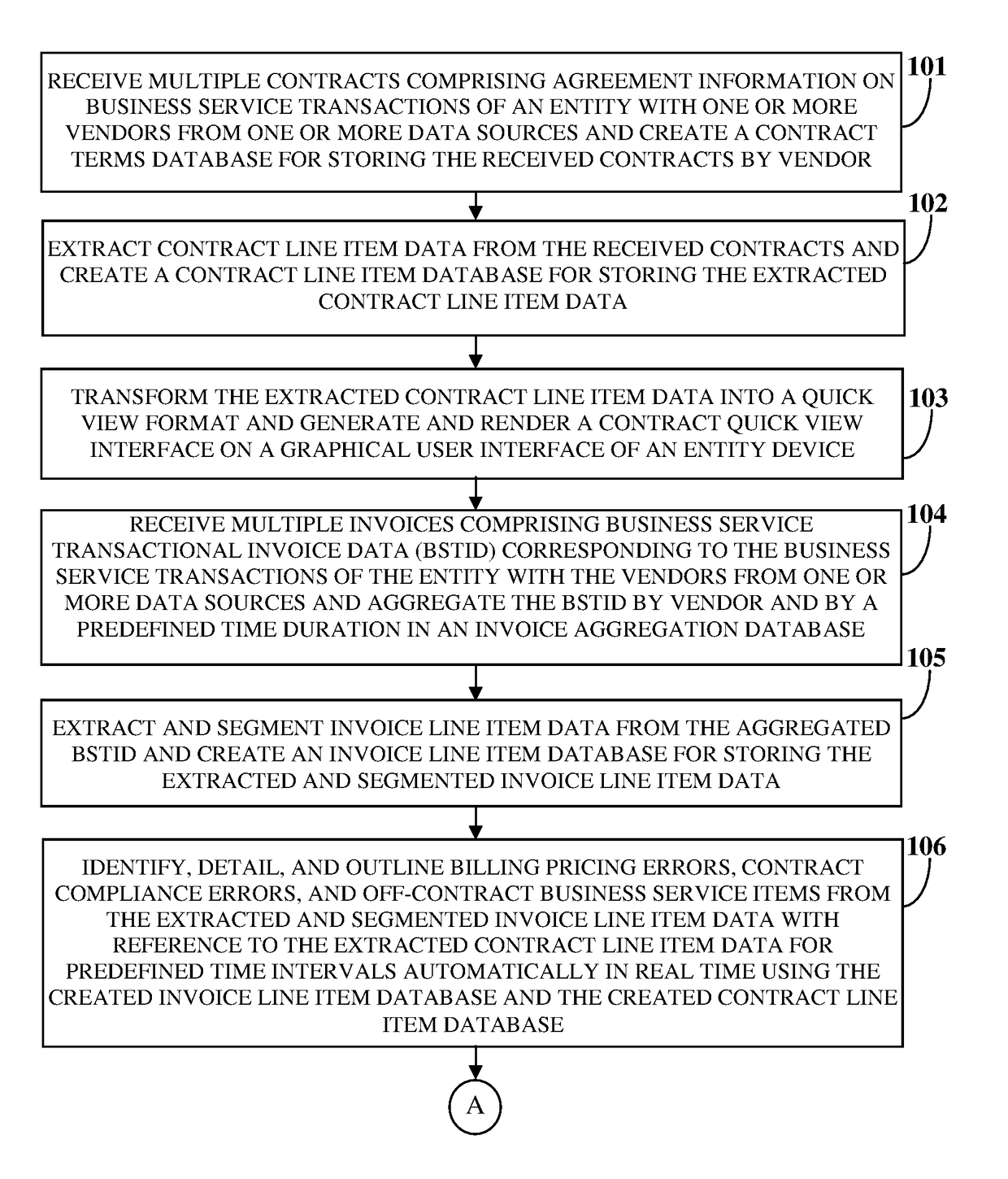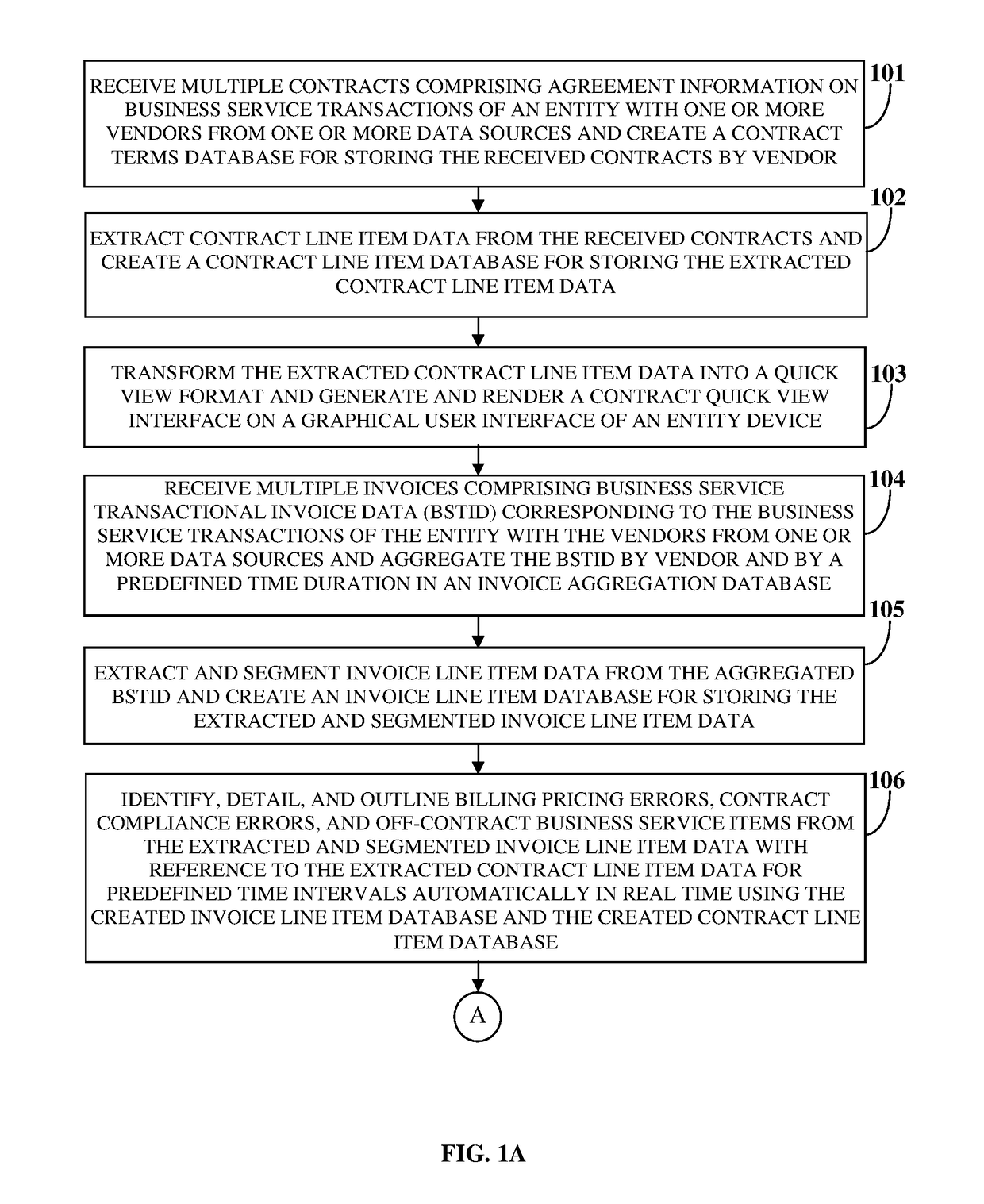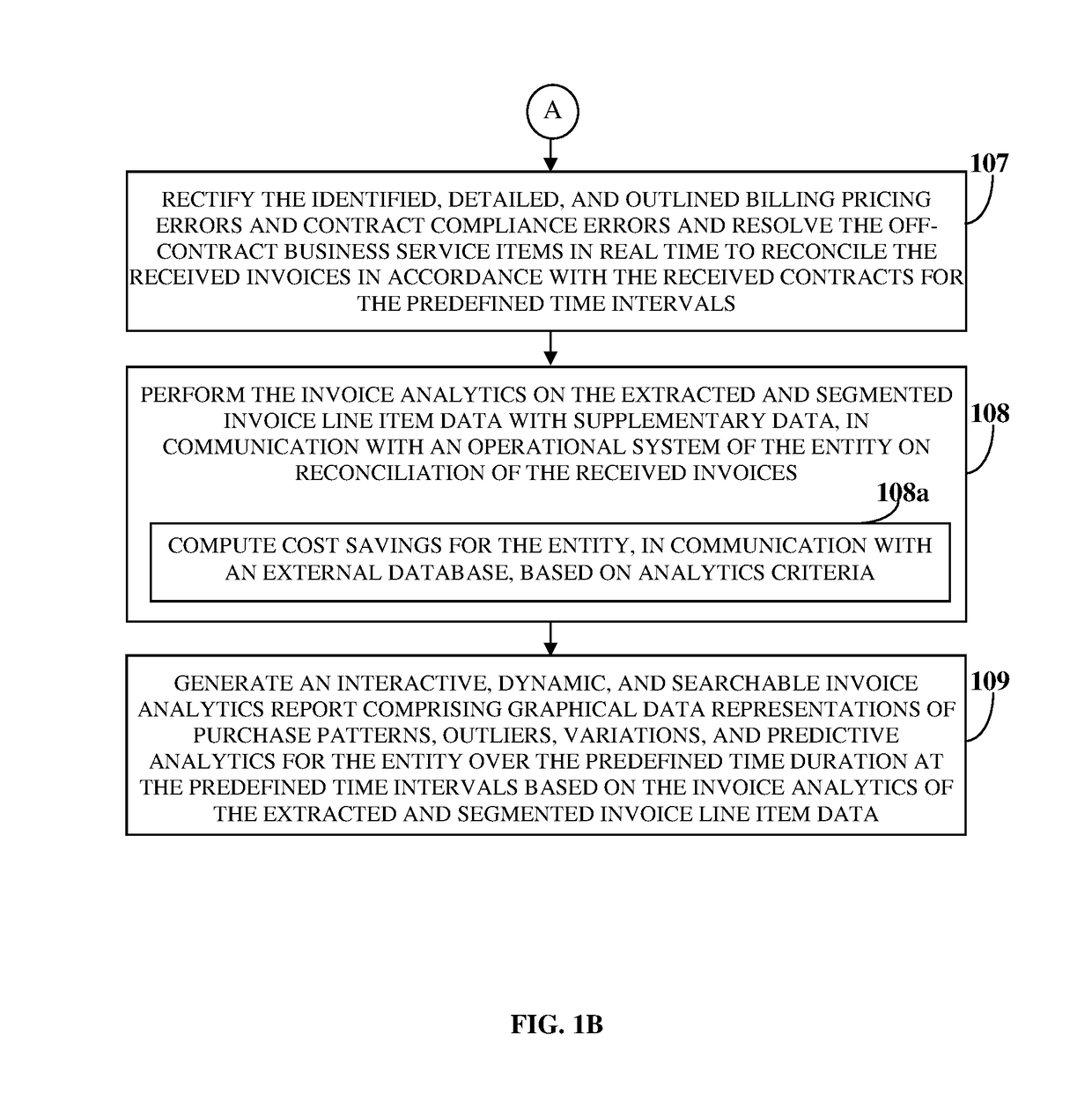However, the business services are not accounted in a detailed
purchase order that is issued before the business services are provided.
As a result, the entity does not have
visibility into the line item details of the business services other than by performing a manual process of physically examining the invoice.
While the entity can run a report to show the total spend of the entity by month for the business services provided by the vendor, the entity does not have access to the line item details for the business services due to the nature of the spend.
Vendor billing of the business service in accordance with the contract to the
business entity is typically a manual task and as such has a substantial risk of billing errors that typically go unseen or are not identified by the entity.
The extensive amount of unique specific service data containing details of multiple business services provided by the vendor present in the invoice requires the entity, for example, a large organization, to spend a large amount of time and resources for reviewing the invoice.
However, due to complexity of the contract and the manual aspect of billing for the business service, the invoice for the business service typically contains multiple billing errors.
Conventional methods for reconciling an invoice do not provide a means for the entity to assess errors in the invoice in real time, resulting in the entity having to pay high prices or get fees assessed that are not in compliance with the entity's contract.
Reconciliation of business services is difficult as business services vary, for example, by number of contracts, various locations within a
business entity, number of people deployed for a job, number of man hours, over time of people deployed for the job based on the classification of tasks under the business service, payer mixes, etc.
Because benchmarks on business service costs are not readily available, the diverse and varied pricing of services makes it difficult to determine whether spending is too much or too little and prevents the entity from negotiating appropriate costs.
In conventional methods, the complexity involved in
purchasing, delivering, contracting, and monitoring business services prevents the entity from identifying errors in the invoices and does not provide real time
visibility into the business services procured by the entity.
Moreover, the conventional methods do not provide automated, ongoing line item
visibility,
real time pricing analysis, and benchmarks for the business services.
Billing pricing errors are rarely found on a monthly basis in invoices for business services.
Moreover, in the
accounts payable audit or the
performance improvement initiative, only if the entity pulls all the previous invoices for the business services and compares every entry in each of the invoices with a corresponding contract, the entity may identify all of the billing pricing errors.
The entity would rarely compare every entry in each of the invoices with the contract due to complexity of the contract and enormous resources and time the entity would need to conduct this reconciliation by business services, by vendor, by month, by line item, etc.
If the contract is located, it is laborious to identify relevant pricing, utilization terms, and financial terms that may
impact the invoice.
Invoices for business services are difficult to reconcile on a monthly basis for validating the utilization of the business services.
Using the
operational system alone, the entity cannot perform invoice analytics and utilization reviews by line item detail.
Moreover, entities typically do not utilize insight from their monthly invoices to optimize their purchase patterns or spend habits for business services in real time and also do not trend the purchase patterns of the business services in real time to identify the purchase patterns' or variation problems as they happen to take corrective action in real time for
cost control and utilization.
However, the hospitals face challenges in realizing the cost reduction opportunities.
One of the challenges is that a monthly reconciliation of invoices is either never performed or is performed in a cursory manner with approval routinely granted if the invoice is within about 10% of the previous month's invoice.
This manual reconciliation is substantially labor intensive and proves costly to the hospital.
Moreover,
cost analysis conducted for the business services is typically not in-depth and / or not holistic.
However, the utilization spend report typically prepared by vendors do not reflect what the paid invoices show and omit vendor fees, service charges, shipping charges, and other costs.
A reason for not addressing business services spend is that business services spend areas, for example, revenue cycle, finance, legal, marketing, and real estate leases are typically presumed to be beyond the scope of benchmarking or a utilization improvement review because expertise required to conduct an analysis is either unavailable or is subject to privacy concerns of sensitive relationships between vendors and entities.
A hospital cannot directly achieve
cost savings from monthly category spend alone.
However, spend variances are not easy to identify.
 Login to View More
Login to View More  Login to View More
Login to View More 


